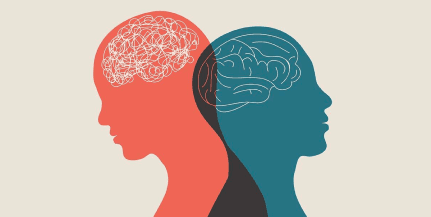
In the fabric of a romantic relationship, conflicts and challenges are as inevitable as the changing of seasons. However, the way we choose to confront these conflicts can make the difference between a relationship that flourishes and one that withers under the weight of misunderstandings and resentments. Not all problems in a relationship are solvable, but even those that seem insurmountable can be managed with understanding, empathy, and effective communication. This article delves into the heart of relationships, exploring effective strategies that couples can employ to address both soluble and insoluble issues, strengthening their bond in the process.
How can couples effectively address soluble and insoluble conflicts in their relationship, and what strategies will allow them not only to survive these challenges but also to thrive despite them? Couples can effectively address conflicts by differentiating between soluble and insoluble problems, applying techniques of effective communication, and emotional validation. For soluble problems, strategies such as clearly defining the issue, generating judgment-free solutions, and implementing the most viable solution are key. As for insoluble problems, which often stem from personality differences or fundamental needs, it's crucial to adopt a conflict management approach that includes accepting differences, validating emotions, and seeking compromises. Through these approaches, couples can build a bridge over their differences, strengthening their relationship and fostering an environment of love and mutual respect.
Soluble Problems vs. Insoluble Problems
In the realm of romantic relationships, conflicts can be classified into two major categories: soluble and insoluble. This distinction is not only fundamental for understanding the nature of the challenges that couples face but is also crucial for applying the most appropriate problem-solving strategies.
Soluble Problems

Soluble problems are those that have specific solutions and can be resolved through behavior changes, communication adjustments, or mutual compromises. These problems are often related to specific situations or disagreements that, with the right tools and effective communication, can be addressed and resolved. Cognitive-behavioral therapy (CBT) suggests a practical approach to solving these problems, which includes clearly identifying the problem, generating solutions without prior judgment, evaluating these solutions, implementing the most viable one, and reviewing the results to ensure that the problem has been satisfactorily resolved.
Example: A soluble problem could be a disagreement about how to manage household finances. Through effective communication, the couple can establish a mutually agreed-upon budget and create a savings plan that satisfies both parties.
Insoluble Problems

On the other hand, insoluble problems are those based on fundamental differences in personality, values, or essential needs that are not easily subject to change. According to research from The Gottman Institute, 69% of problems in relationships fall into this category. These problems require a management approach rather than resolution, where the goal is to learn to live with these differences in a respectful and understanding manner, without them becoming sources of perpetual conflict.
Example: An insoluble problem could be one partner's desire to have children while the other prefers not to. This type of issue doesn't have a "solution" in the traditional sense, but it can be managed through deep communication, mutual understanding, and, in some cases, the pursuit of creative compromises or acceptance of differences.
Navigating between solutions and acceptance.
The key to managing both types of problems lies in the couple's ability to communicate effectively, practice empathy, and apply appropriate strategies for each situation. For soluble problems, it's essential to focus on practical and achievable solutions. As for insoluble problems, the challenge is to accept and value each other's differences, seeking ways to support each other despite these discrepancies. Understanding the difference between soluble and insoluble problems allows couples to address their conflicts with a clearer and more effective perspective, leading to a healthier and more satisfying relationship. By recognizing that not all problems need to be "solved" in the conventional sense, couples can focus on building a deeper mutual understanding and strengthening their emotional bond.
Strategies for addressing soluble problems:
Cognitive-behavioral therapy (CBT) provides an effective framework for resolving soluble conflicts in relationships through a structured five-step process. This method not only helps identify and resolve specific problems but also fosters positive communication and mutual understanding. Below, this process is described, and practical tips are offered for applying these strategies in the context of a relationship.
1. Problem Definition
Description: The first step is to define the problem clearly and specifically, without generalizations or criticisms. It's important that both members of the couple understand exactly what the problem is from each other's perspective.
Practical Tip: Take time for each of you to express your view of the problem without interruptions. Use "I feel" or "I perceive" statements to avoid accusations and focus on your own experiences and perceptions.
2. Judgment-Free Solution Generation
Description: This step involves thinking of all possible solutions to the problem without evaluating or immediately dismissing them. The idea is to foster creativity and openness.
Practical Tip: Brainstorm ideas where each proposal is valued. Maintain an attitude of curiosity and openness, avoiding judgment until all options are on the table.
3. Evaluation
Description: Once solutions have been generated, evaluate together the pros and cons of each one. This analysis should be honest and objective, considering short and long-term effects.
Practical Tip: Discuss how each solution would affect the relationship and each individual's life. Consider the necessary resources (time, money, effort) and the feasibility of each option.
4. Implementación
Description: Choose the solution that both of you consider most feasible and beneficial. Develop a specific action plan, assigning tasks and deadlines.
Practical Tip: Write down the details of the action plan and establish how and when you will start implementing it. Make sure both of you are committed and understand your role in the solution.
5. Revisión
Description: After an agreed-upon period of time, review the progress together and evaluate the effectiveness of the implemented solution. Adjust the plan as necessary.
Practical Tip: Be honest about what worked and what didn't. If the original solution doesn't completely solve the problem, consider modifying the plan or exploring other options discussed during the solution generation phase.
Applying these strategies in a relationship requires patience, open communication, and mutual commitment to resolving conflicts constructively. By following these steps, couples can not only solve specific problems but also strengthen their relationship by improving their communication and problem-solving skills. This process highlights the importance of working together toward common solutions, thus fostering a stronger and healthier union.
Handling Insoluble Problems
In romantic relationships, not all conflicts have a clear or definitive solution. Many challenges arise from fundamental differences in personalities, values, or essential needs. The key to maintaining a healthy and satisfying relationship doesn't always lie in resolving these conflicts but in learning to manage them effectively. This involves accepting differences and building open and respectful dialogue.
1. Acceptance of Differences
Accepting the fundamental differences between partners is the critical first step in handling insoluble problems. Recognizing that certain discrepancies are not indicative of incompatibility but rather facets of the complex human nature can free couples from the frustrating cycle of trying to change each other.
Technique: Practicing active empathy is a way to foster acceptance. This involves genuinely listening to your partner's perspectives and feelings without trying to correct or dispute them. Acknowledging and validating their experiences, even if you disagree, can strengthen the emotional bond and promote greater mutual understanding.
2. Construcción de diálogo
Maintaining ongoing dialogue about problems allows couples to explore their differences in a safe and constructive space. Instead of avoiding difficult conversations, opening up a channel of communication about these issues can help prevent resentments and misunderstandings.
Technique: Use "connection moments" to discuss these issues. These are moments where both partners feel relaxed and connected, facilitating more open and receptive communication. During these times, they are more likely to listen to and understand each other without becoming defensive.
3. Técnicas de validación y comprensión
Validation and understanding are powerful tools in managing insoluble challenges. Validation doesn't necessarily mean agreeing with your partner's perspective, but rather recognizing their feelings and experiences as valid and legitimate.
Technique: One way to practice validation is through reflective listening, which involves paraphrasing what your partner has expressed in your own words, ensuring you have understood their viewpoint correctly. This not only shows that you are actively listening but also that you care about their feelings and experiences.
Effectively handling insoluble problems requires a continuous commitment to communication, validation, and acceptance. By adopting these strategies, couples can build a stronger and more resilient relationship capable of enduring the differences and challenges that inevitably arise. Remember that the goal is not to eliminate all areas of disagreement but to learn to live with them healthily, respecting and appreciating the unique complexities each person brings to the relationship.
Effective Communication Strategies
Effective communication during conflicts is essential for maintaining a healthy and understanding relationship. Below are strategies and practical tips that couples can use to improve their communication, especially during times of disagreement.
1. Use of a Soft Startup
Starting difficult conversations with a gentle and non-confrontational tone can prevent your partner from becoming defensive. This involves addressing the issue calmly, clearly, and openly, rather than with criticism or accusations.
Practical Tip: Start the conversation by expressing a personal feeling or need without assigning blame. For example, "I feel worried when we don't discuss our financial plans. Can we talk about how to improve our communication on this topic?"
2. "I" Statements
"I" statements allow you to express your own feelings and perspectives without making your partner feel guilty or attacked. This fosters a safe space where both can openly share their thoughts and feelings.
Practical Tip: Instead of saying "you never do the household chores," try "I feel overwhelmed when I have to take care of cleaning alone. I would like us to find a more equitable way to distribute these tasks."
3. Repair Tactics
Repair tactics are attempts to calm tensions and keep the conversation on a positive track. They can be verbal, such as apologies or clarifications, or non-verbal, such as affectionate gestures or facial expressions of concern.
Practical Tip: If the conversation heats up, try saying "I realize this is really important to both of us. Let's take a moment to calm down before continuing."
4. Emotional Validation
Validating your partner's emotions means acknowledging and accepting their feelings as legitimate, regardless of whether you agree with their perspective. Emotional validation is essential for building empathy and mutual understanding.
Practical Tip: When your partner expresses how they feel, try responding with statements like "I understand why you feel that way" or "It's completely valid for you to feel that way about this situation."
Effective communication during conflicts is a skill that couples can develop with practice and commitment. By implementing a soft startup, using "I" statements, employing repair tactics, and emotionally validating your partner, difficult conversations can become opportunities for growth and strengthening the relationship. These strategies foster an environment of respect, understanding, and love, essential for overcoming challenges together.
Building a Bridge Over Differences
The fundamental differences between individuals in a relationship don't have to be a dead end. On the contrary, they can become bridges that, once crossed, strengthen the connection and mutual understanding. Here, we explore how couples can move from a standstill to constructive dialogue about perennial issues, respecting and valuing individual differences.
1. Moving from Standstill to Dialogue
A standstill occurs when couples find themselves trapped in a cycle of unresolved conflict, often exacerbated by the inability to recognize and value fundamental differences. Moving towards dialogue involves creating a safe space where both parties feel heard and understood, without the need for a winner or loser.
Strategies to facilitate this transition:
Active listening: Each person strives to truly understand the other's perspective without interrupting or preparing a response while the other speaks.
Acknowledgment of differences: Accepting that having differences is part of the richness of a relationship. This acceptance allows couples to approach conflicts from a perspective of curiosity and openness, rather than defense or attack.
Space for vulnerability: Fostering an environment where expressing vulnerabilities and fears is safe. Recognizing that behind many firm stances are deep emotional needs or past experiences that influence how each one feels and reacts.
2. Finding Compromises
A compromise doesn't mean one party loses for the other to win; rather, it's a joint search for solutions that respect the needs and dreams of both. Healthy compromises are built on open communication and a willingness to deeply understand each other.
Strategies for finding compromises:
Identification of common needs: Start by identifying shared needs or goals that both value. This can range from achieving a harmonious family life to supporting each other's professional aspirations.
Flexibility and creativity: Being flexible and creative in seeking solutions that can meet, at least in part, the needs of both. This may include unconventional alternatives that hadn't been considered previously.
Celebration of small victories: Recognizing and celebrating when compromises are achieved, even the small ones. This reinforces the bond and trust in the couple's ability to overcome challenges together.
3. Honoring Dreams and Needs
For a relationship to thrive, it's essential that both members feel supported in their personal dreams and needs. This requires a continuous commitment to putting oneself in the other's shoes, celebrating their successes, and offering support in challenges.
Strategies for honoring each person's dreams and needs:
Regular dialogue about aspirations: Maintain conversations about personal aspirations and how the relationship can support them. This demonstrates commitment and interest in the other's well-being and happiness.
Joint planning: Engaging together in planning how to achieve those dreams, which can include everything from financial adjustments to changes in time distribution.
By building bridges over differences, couples not only handle conflicts more effectively but also deepen their connection and mutual understanding, creating a richer and more satisfying relationship.
Conclusion

Throughout this article, a variety of essential strategies were explored for addressing both soluble and insoluble problems in romantic relationships. From adopting a soft startup and using "I" statements to the importance of emotional validation and work on personal values, these techniques are crucial for fostering effective and understanding communication. The ability to differentiate between soluble and insoluble conflicts, and the willingness to take personal responsibility for our needs, strengthens autonomy and mutual respect within the relationship.
Implementing these strategies allows couples to build bridges over their differences, find meaningful compromises, and honor individual dreams and needs, all of which contribute to a healthier and more enduring relationship. Open communication, mutual respect, and ongoing commitment to personal and couple growth are fundamental to overcoming challenges and enriching mutual connection.
I invite all couples to approach their conflicts with understanding, patience, and love. Recognize the importance of each discussed strategy and commit to implementing them in your relationship. Remember that the journey towards a healthy and satisfying relationship is a continuous process of learning and adaptation. By facing challenges together, with an open and loving attitude, you can strengthen your bond and build a solid foundation for the future.
Every step taken towards better communication and mutual understanding not only resolves present conflicts but also paves the way for facing future challenges together. So, take these pieces of advice as tools on your shared journey, always remembering that love, in all its forms, requires both courage and vulnerability. Approach each challenge not as a problem to be solved but as an opportunity to understand each other more deeply and love each other more completely.
Additionally, it may happen that, despite the best efforts to apply these strategies in your relationship, some couples may find themselves facing challenges that they feel are beyond their ability to handle alone. In these cases, I would like to encourage couples to consider seeking professional therapeutic support. Couples therapy can offer a safe and constructive space to explore deeper conflicts, facilitate communication, and promote healing in the relationship. There is no shame in seeking help; in fact, it can be a courageous step towards strengthening your relationship and mutual well-being.
Explore more articles
A mindful approach. Strengthen your personal relationships
Love
Relationships
Healthy
Read Article
Therapeutic tools to efeffectively address and resolve unforeseen challenges and problems.
Resolution
Strategies
Read Article
Acceptance and Commitment Therapy to cultivate self-love.
Self-Love
Acceptance
Commitment
Read Article




